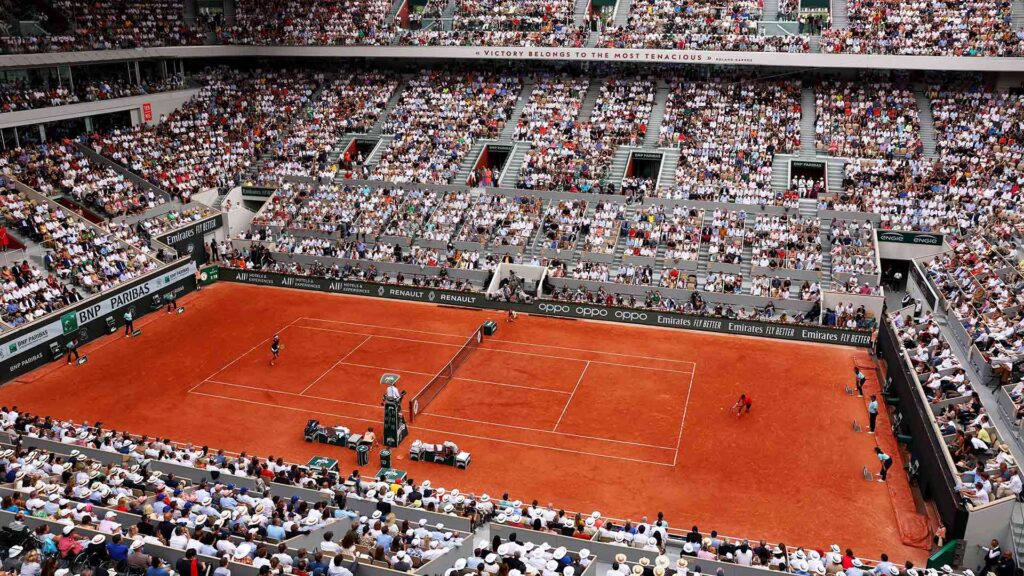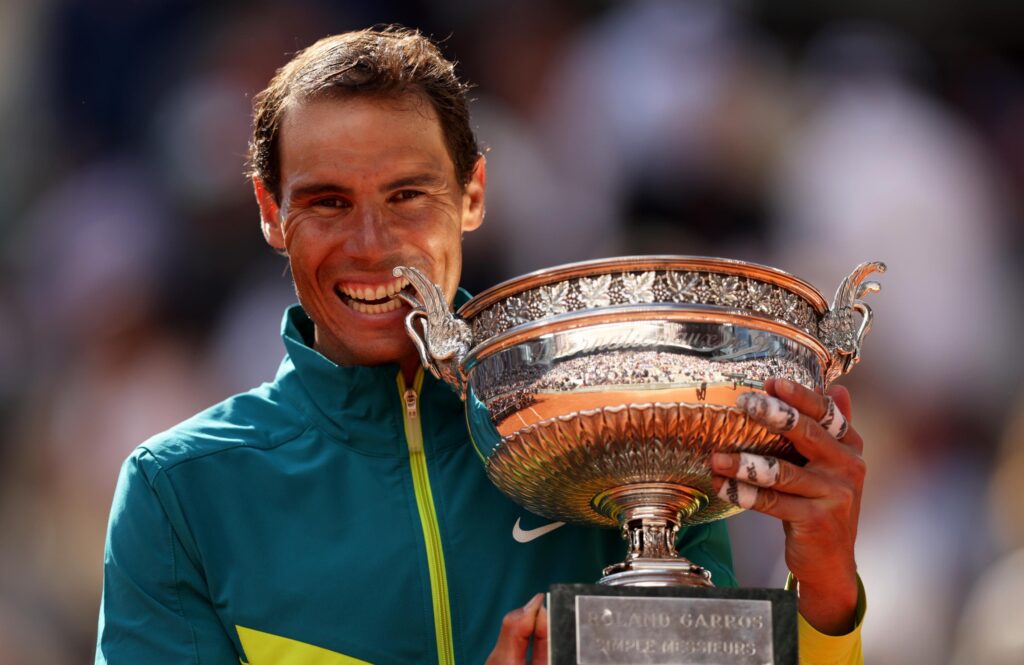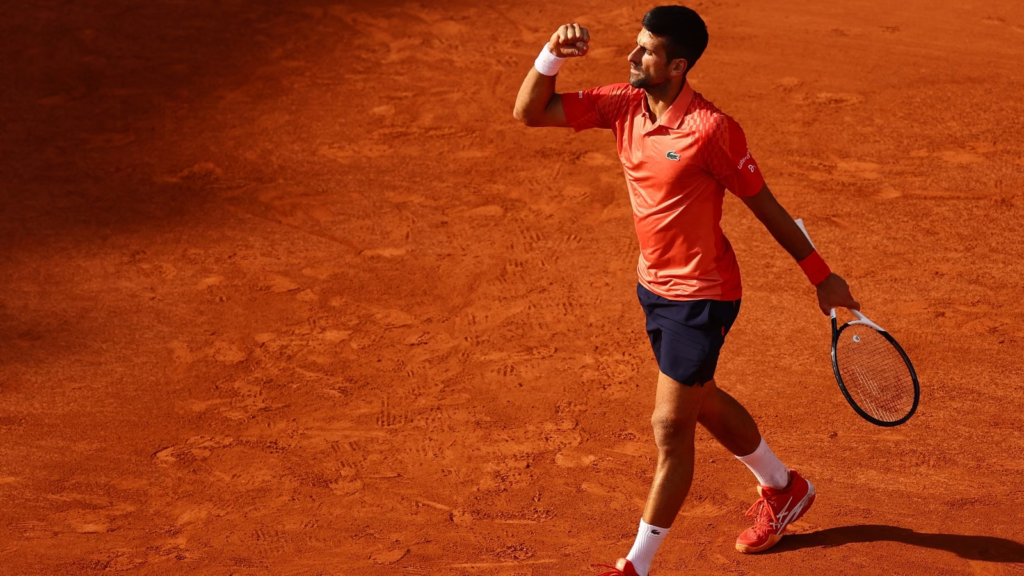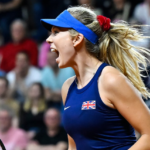The French Open, often referred to as Roland Garros, stands as a shining jewel in the crown of professional tennis. It’s a Grand Slam tournament that carries a unique aura, with a rich history, iconic clay courts, and a roster of legendary champions. In this comprehensive guide, we will delve into all the facets of the French Open, from its origins and historical significance to its notable champions, cultural allure, and the unique experience it offers to players and fans alike.
All About The French Open
History and Origins

The Roland Garros Arena and it’s clay court.
The roots of the French Open trace back to the early 20th century when it was first held in 1891. However, it wasn’t until 1925 that the tournament was officially recognized as a Grand Slam event. Named after the French aviator Roland Garros, who made historic flights during World War I, the tournament reflects the spirit of adventure and excellence.
Over the years, the French Open has evolved, welcoming players from around the world, and it has grown to become one of the most anticipated events on the tennis calendar. Its unique charm lies in the tradition of playing on clay courts, a surface known for its slower pace and challenging nature. This has led to the development of a distinct style of play that sets the French Open apart from other Grand Slam tournaments.
Venue and Facilities
The French Open is held at the iconic Roland Garros stadium, located in the heart of Paris, France. With its red clay courts, the venue is instantly recognizable and has been the stage for countless historic moments in tennis history. It’s not just the courts that make Roland Garros special, but also the world-class facilities that surround them.
Spectators at the French Open are treated to state-of-the-art facilities, including spacious seating arrangements, excellent sightlines, and top-notch amenities. Whether you’re a dedicated tennis fan or a casual spectator, Roland Garros offers an unforgettable experience with its well-maintained grounds, restaurants, shops, and interactive fan zones.
Tournament Format
The French Open boasts a format that is distinct from the other Grand Slam tournaments. It features five primary categories: men’s and women’s singles, men’s and women’s doubles, and mixed doubles. The tournament’s surface is red clay, a choice that has defined the playing style and made it particularly challenging for players.
The red clay courts of Roland Garros tend to favour players who excel in long rallies and have strong defensive skills. This adds an exciting dimension to the tournament, as it often tests the endurance and versatility of the participants. Consequently, the French Open is known for producing its own set of tennis heroes, distinct from those who dominate on grass or hard courts.
Notable Champions

Nadal and His French Open Trophy
The French Open has witnessed the rise of numerous tennis legends who have etched their names into the annals of the sport’s history. From Bjorn Borg’s iconic six titles in the late ’70s and early ’80s to Rafael Nadal’s astonishing 13 titles as of the knowledge cut-off in 2021, this tournament has seen its fair share of tennis greatness. Legends like Chris Evert, Steffi Graf, Martina Navratilova, and Serena Williams have graced the clay courts, showcasing their mastery of the game.
These champions have not only won titles but have also created memorable moments and rivalries that tennis fans continue to celebrate. The French Open has a unique way of bringing out the best in players, making victory at Roland Garros a cherished achievement in the world of tennis.
Prize Money and Trophies
Winning the French Open not only brings fame and glory but also significant monetary rewards. The tournament offers substantial prize money for the champions, making it a coveted title for professional players. While the exact prize money may vary from year to year, it often ranks among the highest in the tennis world.
The winners of the men’s and women’s singles categories receive a substantial financial reward, along with the prestigious trophies. The Coupe des Mousquetaires and the Suzanne Lenglen trophy, named after famous French tennis players, are symbols of excellence in the sport.
These trophies represent not only victory in the tournament but also a place in the history of tennis. They stand as a testament to the skill, dedication, and passion of the athletes who triumph on the clay courts of Roland Garros.
Roland Garros Village
One of the unique aspects of the French Open is the Roland Garros Village, an area within the stadium grounds that offers a delightful experience beyond the tennis action. This village is a hub of entertainment, dining, and shopping, making it a complete day out for both fans and visitors.
Visitors can enjoy a variety of dining options, from gourmet cuisine to casual snacks, and have the opportunity to taste French culinary delights. The village also features pop-up shops with a wide range of merchandise, allowing fans to take home a piece of the tournament. Moreover, there are often entertainment zones, live music, and interactive exhibits that add to the festive atmosphere.
French Open Records and Statistics

The French Open is a treasure trove of records and statistics, providing fascinating insights into the history of the tournament. It’s not just about who won, but how they won, who they defeated, and in what fashion. Here are a few noteworthy records and statistics from the tournament:
- Rafael Nadal’s record 13 French Open titles.
- Chris Evert’s remarkable 125-1 win-loss record at Roland Garros.
- Bjorn Borg’s incredible six titles in a row from 1978 to 1981.
- The longest match in French Open history, lasting over 6 hours.
- Most aces served in a single match.
- Record attendance figures over the years, showcasing the tournament’s popularity.
These records and statistics add to the tournament’s mystique, making it a place where legends are born and history is created.
The French Open Experience
For tennis enthusiasts, attending the French Open in person is a dream come true. To make the most of this experience, consider the following tips:
- Plan ahead: Tickets for the French Open sell out quickly, so book well in advance.
- Choose your seating: Selecting the right seats can make a significant difference in your viewing experience.
- Dress comfortably: Given the unpredictable Parisian weather, dress in layers and be prepared for rain.
- Explore the grounds: Roland Garros has plenty to offer beyond the courts, so take the time to explore the entire venue.
- Savour French cuisine: Don’t miss out on the opportunity to enjoy delicious French food and wine available in the village.
By following these tips, you can ensure an unforgettable visit to the French Open and immerse yourself in the unique atmosphere of the tournament.
Cultural and Off-Court Aspects
The French Open is not just a tennis tournament; it’s a cultural spectacle. The event draws in fans and tourists from around the world who come to soak in the unique atmosphere. Here are some cultural and off-court aspects to savour:
- Fashion: The French Open is known for its fashion, with players and spectators often seen sporting stylish attire. Many players choose to don specially designed outfits for this prestigious event.
- Cuisine: French cuisine is renowned worldwide, and at Roland Garros, you can savour delicious French dishes. From croissants to crème brûlée, the culinary offerings at the tournament are a treat for the taste buds.
- Art and Exhibits: The tournament often features art exhibitions and cultural displays, providing insights into French art and history. It’s an opportunity to immerse yourself in the country’s rich culture.
- The Fan Atmosphere: The French Open boasts a unique and passionate crowd. The fans are vocal and bring their unique flair to the matches, creating an electric atmosphere that’s a joy to be a part of.
Recent Developments and Future of the French Open
The French Open is not a static event. It has seen several developments and innovations over the years. One notable change is the expansion of the Roland Garros facilities, including the addition of new courts and improved amenities for fans and players. These changes have been aimed at enhancing the overall experience of the tournament.
Looking to the future, the French Open continues to evolve. There are discussions about potential changes to the tournament format, which could include the introduction of a roof on the main stadium court, Philippe Chatrier, to combat weather-related delays. The tournament organizers are also exploring ways to make the event more sustainable and eco-friendly.
Famous Rivalries and Memorable Matches
Throughout the history of the French Open, there have been some unforgettable rivalries and matches that have etched themselves into tennis lore. Matches like the Nadal vs. Federer 2008 final or the epic battles between Chris Evert and Martina Navratilova have left an indelible mark on the tournament.
These intense rivalries and thrilling matches have added layers of excitement and drama to the French Open, making it more than just a sporting event. It’s a stage for unforgettable showdowns.
Fun Facts and Trivia
As we wrap up our exploration of the French Open, let’s sprinkle in a few fun facts and pieces of trivia to pique your interest:
- The French Open is the only Grand Slam tournament that’s played on clay courts.
- The tournament was initially reserved for members of French tennis clubs and international players who had French citizenship.
- Roland Garros was the first Grand Slam to go open, allowing both amateurs and professionals to compete in 1968.
- The youngest French Open champion is Michael Chang, who won the tournament in 1989 at the age of 17.
Conclusion
The French Open is more than just a tennis tournament; it’s a celebration of sport, culture, and history. It’s where legends are made, records are broken, and unforgettable moments are created. Whether you’re a tennis enthusiast or simply a lover of sports and culture, the French Open is an event worth experiencing. As you plan your visit or watch from afar, immerse yourself in the clay court magic of Roland Garros and be part of this extraordinary journey in the world of tennis.






